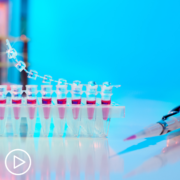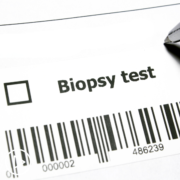Understanding Risk in AML: How Molecular Testing Affects Treatment Options
Understanding Risk in AML: How Molecular Testing Affects Treatment Options from Patient Empowerment Network on Vimeo.
How does molecular testing impact acute myeloid leukemia (AML) treatment options? Dr. Pinkal Desai discusses molecular testing and how results may help determine the best treatment path for patients.
Dr. Pinkal Desai is Assistant Professor of Medicine at Weill Cornell Medical College and a hematologist specializing in acute myeloid leukemia (AML) at Weill Cornell Medicine. Learn more about Dr. Desai, here.
Related Resources:

|

|

|
Transcript:
Katherine:
Dr. Desai, is there a high-risk and a low-risk AML? And if so, what are the indicators?
Dr. Desai:
So, in terms of when we talk about risk of leukemia, many patients, when they come, they frequently ask what stage this is, which is generally not how leukemia is categorized, unlike lung cancer, or breast cancer, or any of the solid tumors. Leukemia is in your blood and in your bone marrow, so it’s kind of like all or none to some extent. When we talk about risk in leukemia, we’re talking about what is the chance of this leukemia coming back in the future. So, is the chance high, intermediate, or low?
And that’s how we categorize leukemia, into these three sort of risk categories, low risk, intermediate risk, and high risk. These risk categories are made up.
We decide these based on information from two aspects. One is the chromosomes, which we talked about. There are certain good risks of chromosomal abnormalities as well, where, for example, poor binding factor leukemias, where these leukemias tend to respond very well to chemotherapy. There are some higher risk, that the chances are higher to come back. And then, the middle category of intermediate risk, where it’s sort of in the middle.
The molecular subtype, or the molecular classification of AML is extremely, extremely relevant, because it gives you pretty much your own signature, and the patient sort of specific, personalized risk of whether this is going to have a high, intermediate, or a low risk to come back.
So, it’s a combination of chromosomes, and the molecular subtype, which is extremely important in figuring out the risk category.
Now, in the course of the treatment and decision-making of leukemia, we don’t have – we’ll have the chromosome information quite early, usually within the first two to three days, but the molecular information, some of it comes back pretty fast, like in a couple days from the testing. But many of these tests, the full panel comes back about 14 days after we do the original bone marrow biopsy. Some of these decisions on whether this is high risk or low risk is relevant in the long run. These decisions happen later, and you don’t have to wait for the treatment, obviously. This is more for what happens after a patient goes into remission.
But there are certain molecular genes that are very important in deciding treatment up front, and those we expedite, and they are back usually before treatment decision is made. For example, FLT3 ITD or FLT3 TKB.
These are two genes where the up-front treatment decision changes, depending on the presence or absence of this gene. So, you really, really do want to know this information early on.
Chromosomes you absolutely need it before treatment begins, because there are several options of leukemia treatment that are specific to certain chromosome subtypes. So, that’s like the basic information you need to have before making any treatment plans.










